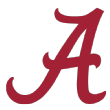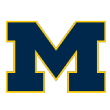Every NFL play is derivative. It's 11 players on offense vs. 11 players on defense, all lining up in generally the same spots and doing the same stuff.
Every now and then, though, I see something on film that makes me pause and rewind. "Wait, what just happened?" It's smart coaches making tweaks to formations and play designs that we've all seen a thousand times.
I love to watch college film to see who's innovating. Which coaches are scheming-open their players and putting up points?
I found eight unique college football plays -- all touchdowns from this season -- that made me perk up. From a variation off a jet sweep in the Big 12 to some fun option football in the Sun Belt, NFL teams need to steal these plays right now.
I'm also picking perfect NFL fits for all eight plays. You know I had to get Cam Newton and Christian McCaffrey on that option. Let's go.

West Virginia's jet sweep/post-wheel
Oklahoma RB Kennedy Brooks takes the carry, finds a seam and zips to the end zone on a 45-yard touchdown run.
What's happening: With quarterback Will Grier in the gun, the Mountaineers use play-action off a jet sweep to set up the post-wheel concept. In WVU's playbook, the man on the jet sweep turns into the wheel. With the outside receiver pushing inside on the post to occupy both the cornerback and the safety, there's an open void in the coverage for Gary Jennings to convert the jet sweep to the wheel route up the boundary. Look how open he is -- that's a layup for Grier to get the score. Nasty stuff.
Why it's unique: We see the post-wheel concept at every level of the game, especially under the Friday night lights with spread teams out of 2x2 sets. But running the wheel off jet takes time. Teams have to trust their offensive line ... or give them help. That's why West Virginia uses seven-man protection, with both the tight end and running back staying behind to block. That gives Grier the time to spot Jennings running uncovered up the field.
The perfect NFL fit: Kansas City Chiefs. It's the speed of Tyreek Hill in an offense under Andy Reid that loves to use pre-snap misdirection and play-action. Just picture Hill turning that route up the field. And with the boundary corner now removed because of the post route, there is open grass for Patrick Mahomes to dial up a deep shot to the NFL's fastest man.

Oklahoma's GT lead
Tua Tagovailoa throws a dart to WR Jerry Jeudy for an 81-yard touchdown, putting Alabama up 7-0 early.
What's happening: Out of a split-back look, the Sooners run the GT scheme, which means the backside guard and tackle pull while the other back digs out more room and leads the way for Kennedy Brooks. With opposing defenses forced to account for Kyler Murray, the Oklahoma quarterback can influence the backside edge defender off the mesh point, forcing him to stay home. You can see that defender hesitate just for a second -- while Brooks runs past him.
Why it's unique: Classic GT power and GT read -- with the quarterback reading the edge defender -- show up consistently across high school and college football. But I really like the spin OU coach Lincoln Riley puts on this concept out of a split-back set. It looks easy, right? Wrong. Riley puts a lead blocker in front of his back at the point of attack, adding one more guy defenders have to account for. That allows the offense to get up on an overhang linebacker or a strong safety rolled down. Teams have to have athletic offensive linemen for this, too. Move your feet, boys, and lead the way for an untouched 45-yard touchdown.
The perfect NFL fit: Dallas Cowboys. The Cowboys have shown the GT scheme this season, with quarterback Dak Prescott influencing that backside edge defender. That keeps the opposing edge defender at home in case Prescott keeps it. But with Riley's setup, the Cowboys could use an extra tight end to create the split-back look or go with 21 personnel (2RB-1TE-2WR) to get fullback Jamize Olawale in the game. The result is more bodies to the play side and more running lanes for Ezekiel Elliott to push the ball up the field.

Alabama's 'lock' screen/post
David Blough connects with a wide-open Brycen Hopkins, who walks into the end zone to extend the Boilermakers' lead to 27-7.
What's happening: The Crimson Tide use play-action and a fake pump-screen to attack vertically to the backside of the formation. Out of 11 personnel (1RB-1TE-3WR), Alabama shows run off the stretch with quarterback Tua Tagovailoa pumping to the "lock" screen, which is a fake outside wide receiver key screen. This pulls defenders to the screen side of the field, and it creates conflict for the deep safety, who doesn't quite know what he's seeing on the backside double-post coming at him. And remember, Tagovailoa is faking twice here: the play-action to the back and the pump fake on the lock screen. Meanwhile, playmaker Jerry Jeudy beats his man on the inside vertical from the slot for six points.
Why it's unique: We see lock screens quite a bit in the NFL. Just look at the Patriots, with Tom Brady pumping to the outside receiver (or bubble) and hitting the inside seam for an explosive gain. I like offensive coordinator Mike Locksley's look here because it allows Tagovailoa to work backside to a two-level vertical read. Safety stays high? Throw the intermediate post. But if he bites or pushes frontside to the screen, Tagovailoa can take a shot to Jeudy. And that cat can fly.
The perfect NFL fit: Cleveland Browns. Picture this concept in the Browns' game plan with either wide receiver Jarvis Landry or tight end David Njoku running the lock screen off the pump from quarterback Baker Mayfield. The rookie can throw that inside vertical seam all day. Plus, with the blazing speed of wide receiver Antonio Callaway running the deep post to the backside, Mayfield can put some touch on the throw to drop a dime over the top.

Purdue's TE throwback pass
Georgia Southern quarterback Shai Werts keeps it himself and runs 47 yards for a score to give Georgia Southern a 24-7 lead over Appalachian State.
What's happening: Purdue uses play-action, plus quarterback sprint, to set up the throwback pass to tight end Brycen Hopkins. Off the stretch run look, the Boilermakers pull the backside guard with quarterback David Blough rolling out. This allows the running back to push to the wheel -- widening the linebacker -- with the backside receiver on a dig route to occupy the safety. That creates an open pocket for Hopkins, who delays his release, to work to the middle of the field. It's a wide-open target for Blough off the throwback pass.
Why it's unique: You didn't expect that guy to get the ball, did you? He just appears -- uncovered. The tight end throwback isn't new, and it shows up in both the Rams' and 49ers' offenses. But this version stands out because of the guard pull and the running back on the wheel. The pulling guard grabs the eyes of the frontside second-level defenders, and the wheel is going to widen anyone hanging out on the backside of the formation. This is a case in which more window dressing proves to be a good thing. And that guard makes sure his quarterback doesn't get touched.
The perfect NFL fit: Chicago Bears. We could easily peg the Niners here with tight end George Kittle, but I like the idea of Matt Nagy's system with quarterback Mitchell Trubisky looking to hit the throwback pass. Think of running back Tarik Cohen on that backside wheel -- which is going to draw some eyes from the defense -- with tight end Trey Burton releasing off the delay. It's another opportunity for Nagy to dial up an open window throw for Trubisky.

Georgia Southern's counter option
What's happening: I love option football, and the Georgia Southern tape is loaded with creative schemes that highlight the quarterback run game. Here, the Eagles dress up a classic counter/power scheme to fit the option game. With the backside guard pulling to kick out the edge defender, the dive back leads through the hole. That clears a lane for quarterback Shai Werts to get downhill for an explosive 47-yard run.
Why it's unique: Run out of a split-back look, Georgia Southern adds a pitch man. That's going to pull the free safety in single-high safety defenses -- you can see him sprint to the running back here -- or the alley safety filling downhill in split-safety alignments. Force a defender to play the pitch with the Eagles running downhill power on a QB-designed run. But you've got to block it up for it to work.
The perfect NFL fit: Carolina Panthers. Offensive coordinator Norv Turner has done an excellent job of adapting to the spread run game with Cam Newton and Christian McCaffrey in the backfield. Turner will dress up his backfield looks and give defenses something to think about. This is another option that caters to Newton as a downhill runner, and rookie wideout DJ Moore can line up in the backfield as the pitch man.

Michigan's TE 'pop' pass
Iowa quarterback Nate Stanley continues to thrash Minnesota's defense with his third touchdown pass of the half, hitting Nick Easley on the seam route.
What's happening: With 13 personnel on the field (1RB-3TE-1WR), Michigan runs a red zone run-pass option (RPO), pairing the CT power sweep -- center and tackle pulling -- with the tight end "pop" pass. This allows quarterback Shea Patterson to read the weakside linebacker and hit the tight end in the now open window.
Why it's unique: It's the combination of the personnel and the called run that makes this different -- and the speed with which it has to happen. Having three tight ends on the field on first-and-goal with a front-side power scheme is going to grab the eyes of everyone in the stadium. Everybody's thinking run. That means Michigan can slip the backside tight end into the now vacated area of the field. It's an easy pitch-and-catch on a super high-percentage throw for the quarterback with no time for the defense to recover.
The perfect NFL fit: Indianapolis Colts. The Colts go four-deep at tight end with Jack Doyle, Eric Ebron, Erik Swoope and Mo Alie-Cox. Plus, quarterback Andrew Luck, who has 26 touchdown passes this season, has hit the tight end position for 14 of those scores. Coach Frank Reich has used tight ends to create matchups and attack open voids in zone coverages. Here's another one he can add to his game plan.

Iowa's smash/shake seam
Ryan Agnew throws on target to TE Kahale Warring, who brings it in to give the Aztecs a 14-0 lead over the Wolf Pack.
What's happening: Hawkeyes offensive coordinator Brian Ferentz dialed up the perfect route to beat a split-safety look here. Out of an empty set -- five pass-catchers out wide -- Iowa runs mirrored smash concepts, an outside hitch paired with a deep corner route. That occupies both safeties, forcing them to widen and top the corner routes. With the middle of the field now open, wide receiver Nick Easley runs the inside juke/seam, putting him one-on-one with a linebacker. Easley shakes the defender to press up the seam, and it's an open touchdown throw for quarterback Nate Stanley.
Why it's unique: It's the shake route and where it happens. I've seen it run out of a 2x2 set with the running back releasing out of the backfield on the inside seam. The Iowa concept plays better, though, because Easley takes an underneath release. That tells the linebacker he is running a shallow crosser -- the linebacker doesn't expect a crosser to shoot up the field vertically. You can see the linebacker bite hard. That's what makes this design so cool.
The perfect NFL fit: Pittsburgh Steelers. Think of Antonio Brown running that rout. Force the defender to settle his feet with open grass in the middle of the field? That's stealing. And with the safeties occupied over the top, quarterback Ben Roethlisberger can put some air under this throw to clear the linebacker. Put it in the playbook, Randy Fichtner.

San Diego State's play-action TE corner route
What's happening: Off the outside zone run action, the Aztecs run double "bend" corner routes out of 22 personnel (2RB-2TE-1WR). This puts backside tight end Kahale Warring in a position to stem his route hard to the inside -- that's the "bend" -- forcing the defender to overplay to the upfield shoulder. That allows Warring to sell the deep over route before breaking back to the outside on the corner route for the touchdown. Shake the coverage and separate.
Why it's unique: This is similar to McVay's playbook in L.A., with Brandin Cooks running the bend corner from a tight split alignment out of 11 personnel. I love the concept with 22 personnel in the game, however, as it screams run to the defense. Plus, if you have a tight end who can run a crisp route and sell that initial stem, there is a lot of open field to attack against single-high safety defenses.
The perfect NFL fit: New England Patriots. The Patriots have run 46 snaps out of 22 personnel this season, which ranks fifth in the league. We've already seen tight end Rob Gronkowski run the bend corner off play-action in Josh McDaniels' offense. Think of Tom Brady showing the ball to Sony Michel off the split-flow zone look with Gronk working inside off the release. Beat the defender at the break and establish leverage outside, with Brady putting the ball on the upfield shoulder for the score.
